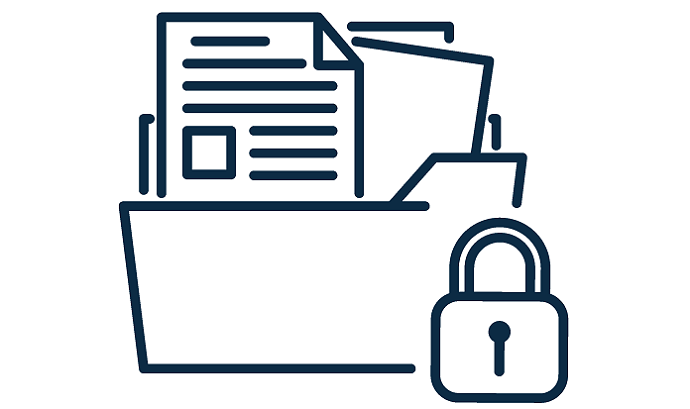Want to know about SaaS security? This article will give you complete information about SaaS security along with the best practices for SaaS security.
Introduction to SaaS Security
SaaS solutions allow businesses to save resources and improve operational efficiency. However, ensuring security protocols for such services remains a challenge for many. 56% percent of the respondents of a recent survey stated that the lack of visibility remained a core concern for them when shifting to SaaS solutions.
However, having a thorough understanding of the best practices for SaaS security can help businesses choose the best provider. When finalizing a SaaS provider some of the many things organizations need to consider include the data protection and access management protocols the provider has implemented.
What is SaaS Security?
Software as a Service (SaaS) security refers to various practices that organizations implement to protect their data and assets when using SaaS products. Such security practices are based on cloud solutions and involve managing, monitoring, and protecting sensitive data from cyber-attacks.
SaaS providers do have certain security measures, such as posture management systems. However, the responsibility for such security measures is shared among both the user and the provider.
What are the Key Security elements of SaaS?
The Key security elements of SaaS include:
- Data Protection
- Security Checklist
- Regular Pentest
- Identity Access Management
- Ensuring Compliance
- Continuous Vulnerability Assessment
Benefits of SaaS
- Cost-Effective
- Time Management
- Scalability and Accessibility
- High Compatibility
- Guaranteed Levels of Service, backup, and Data Recovery
- Enhanced Security
- High Adoption Rates
- You can try it before purchasing
How Does SaaS Security Work?
SaaS security in a cloud environment is based on three layers: Infrastructure, Network, and Application and Software. Security practices at the infrastructure level are implemented at every point where information is exchanged between the provider and the software platform a business uses.
At the network level, information is exchanged through the internet and requires businesses to ensure data packet encryption. Application and Software are the final layers of SaaS security and the most vulnerable due to the unpredictable nature of the client-side environment. To ensure security protocols at this level, businesses must constantly monitor all third-party applications for anomalies that indicate a threat.
Challenges in Implementing SaaS Security
Although SaaS allows businesses to avail endless benefits, implementing security protocols for such solutions comes with a few challenges. One of these challenges includes implementation delays and a lack of a customer-centric approach from SaaS providers.
In addition, the complex structure of SaaS can also lead to misconfiguration, which can hinder the effectiveness of security protocols. Lastly, one of the major challenges is implementing various security protocols, such as end-point security and data encryption, on all the layers of such services.
Best Practices for SaaS Security
Using SaaS products is becoming necessary for businesses and ensuring security protocols in such environments is now more important than ever. These best practices can help businesses create a SaaS security checklist they can use to overcome the challenges mentioned above.
1. Network Control
This allows businesses to use security groups to control access to specific instances throughout a network. In addition, businesses can also use jump servers and network access control lists (NACL) as well.
Using an NACL allows businesses to restrict or permit both inbound and outbound traffic at the subnet level. Along with an NACL, implementing a virtual private cloud that serves the purpose of a firewall can also help regulate traffic at the subnet level.
2. Access Management

When implementing SaaS security measures, businesses need to emphasize on the access management protocols that a provider has in place. It’s important to consider that the access management protocols provide a cohesive framework for user authentication.
The authentication framework should allow businesses to determine user access based on various factors. Such factors include the user’s role, the system they are gaining access to, data requirements, the device being used for access, and the user’s workflow assignments.
3. Virtual Machine Management

Another factor that businesses need to consider is Virtual Machine (VM) management. SaaS providers need to frequently update their virtual machines to have a secure infrastructure. These updates often involve determining ways of identifying new threats and patches that are available for such threats.
Generally, SaaS providers perform these tasks on standardized VM images and third parties that are used in its software. Such a process ensures that the amount of time between a breach and a patch is reduced.
4. Perimeter Network Control
Businesses also need to consider the perimeter network control protocols that SaaS providers have in place. Traditional measures for such a protocol use firewalls to control traffic flow in a data center. This allows the providers to identify and filter out traffic based on predefined rules and reduces potential threats.
In addition, most providers also use advanced perimeter protection levels, including intrusion detection and prevention systems (IDS/IPS). Where traditional measures use firewalls for identifying unknown sources, these measures look for suspicious traffic after it has passed the firewall.
5. Data Protection

Data protection is one of the most critical aspects that businesses need to consider when choosing a SaaS provider. One of the best methods providers use to protect an organization’s data is encryption. Businesses need to ensure that their provider allows them to control encryption keys.
This will allow them to prevent any unauthorized individuals from decrypting organizational data. In addition, most providers also allow businesses to encrypt data at rest. This provides options for building a hierarchy of client and server-side encryption, which improves the effectiveness of security protocols.
6. Incident Management
In addition to the factors mentioned above, an organization should also consider the incident management practices of the SaaS provider. When examining such procedures, organizations must thoroughly analyze how the provider identifies, reports, and responds to security incidents.
Such procedures can allow them to improve their response protocols and mitigate the damage if an incident occurs. In addition, they also help improve overall cybersecurity measures and ensure operation continuity after an incident.
Software as a service security in Cloud computing
Software as a Service(SaaS) security allows you to manage, monitor, and safeguard the important and confidential data of customers. This is the most needed security system for every organization irrespective of its size to secure important data from cyber attacks. In recent times, the usage of cloud applications increased drastically, and the risk of attacks also increased. SaaS implements all the standard and effective safety measures in providing high-level protection for customers’ sensitive data.
There will be lots of SaaS to provide security in cloud computing, but only a few are the most powerful and trustworthy. The SaaS security that follows ISO 27001 standards can provide advanced security compared to other SaaS securities.
CyberSecurity Companies
In recent years, the usage of internet and the cloud services are increased drastically. So, to secure the user’s privacy and data, lots of companies are grown in the cybersecurity sector to provide the best services. Here are the top and best Cybersecurity Companies.
- ManageEngine Endpoint Central
- Paloalto Networks
- Fortinet
- Cisco
- Crowdstrike
- IBM
- OneTrust
- Okta
- Zscalar
- KnowBe4
- DarkTrace
- Proofpoint
- Rapid7
- Checkpoint
- Trend Micro
- Broadcom
- Trellix
- RSA
- Sophos
- Splunk
- Microsoft
- Honorable Mentions
Final Thoughts
Implementing various SaaS security protocols is critical to the protection of organizational data. Security protocols for SaaS products are divided into three layers: infrastructure, network, application, and software.
Various measures must be implemented in these layers to ensure optimal SaaS Security. Businesses often face challenges when implementing security protocols. However, they can use these best practices to ensure the best security from their SaaS provider.
I hope this tutorial helped you to know about SaaS Security: The Complete Details. If you want to say anything, let us know through the comment sections. If you like this article, please share it and follow WhatVwant on Facebook, Twitter, and YouTube for more Technical tips.
SaaS Security: The Complete Details – FAQs
What is SaaS in security?
SaaS security refers to securing user privacy and corporate data in subscription-based cloud applications.
What does SaaS stand for?
SaaS stands for Software as a service. It is a way of delivering applications over the internet as a service.
Is SaaS a firewall?
SaaS Firewalls are designed to secure an organization’s network and its users, not unlike a traditional on-premises hardware or software firewall.
Why is SaaS security important?
SaaS security benefits are manifold and can save a company from devastating consequences following cyber-attacks and data breaches. That’s why any enterprise relying on SaaS applications should take appropriate security measures to protect its data, assets, and reputation.
Can SaaS be hacked?
If a breach occurs in a SaaS provider’s database, it could expose their commercial client’s data.
